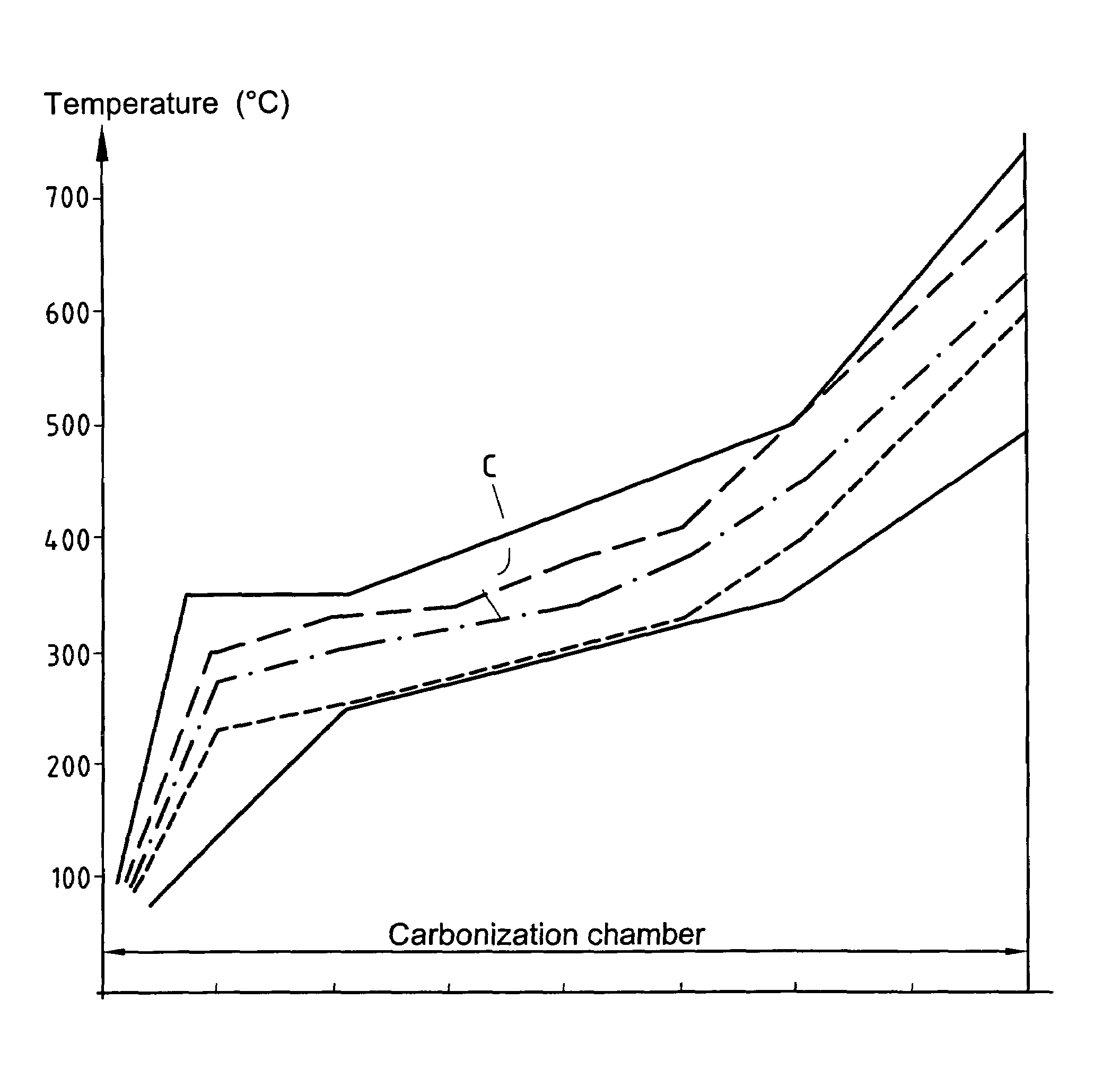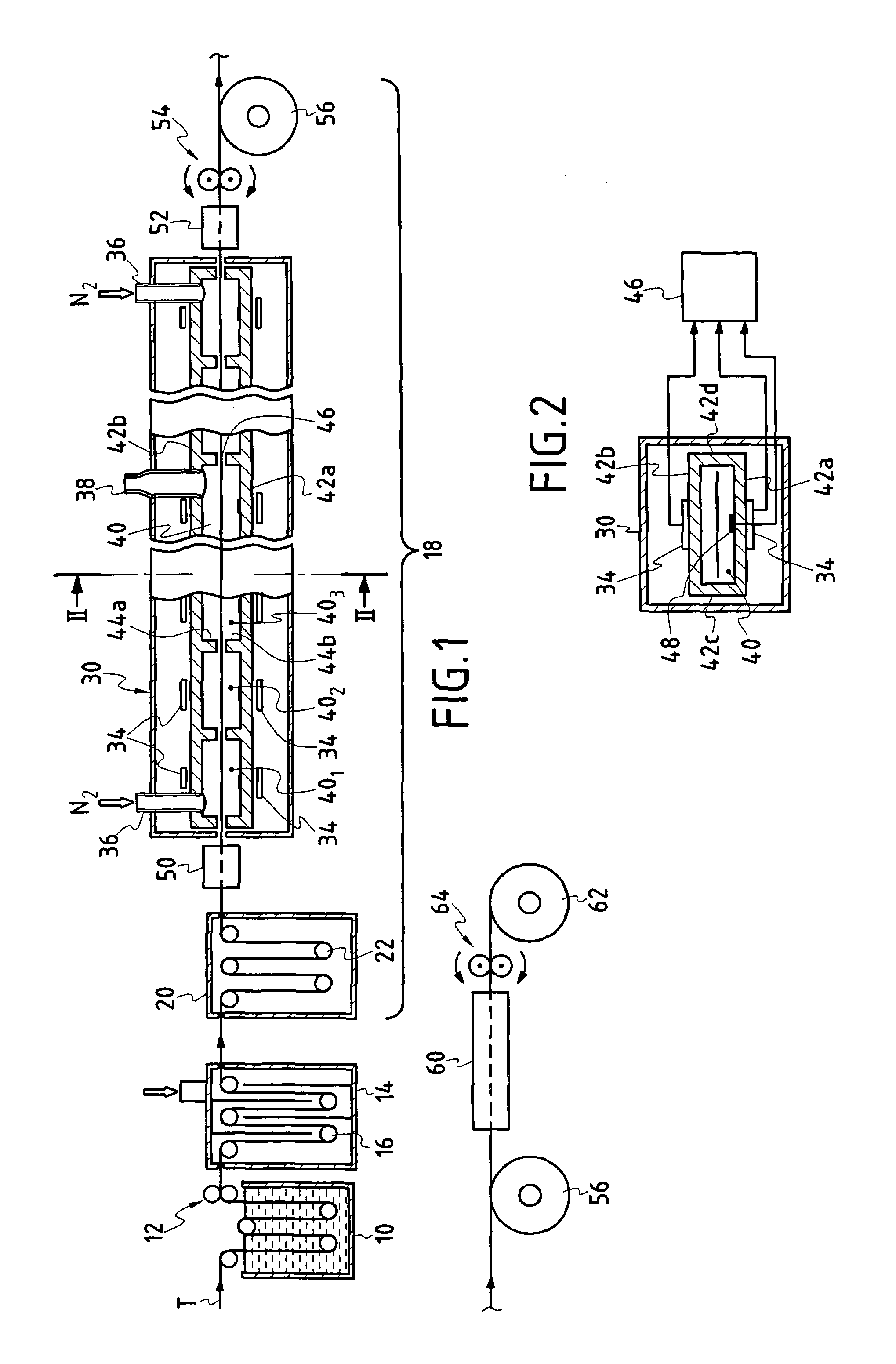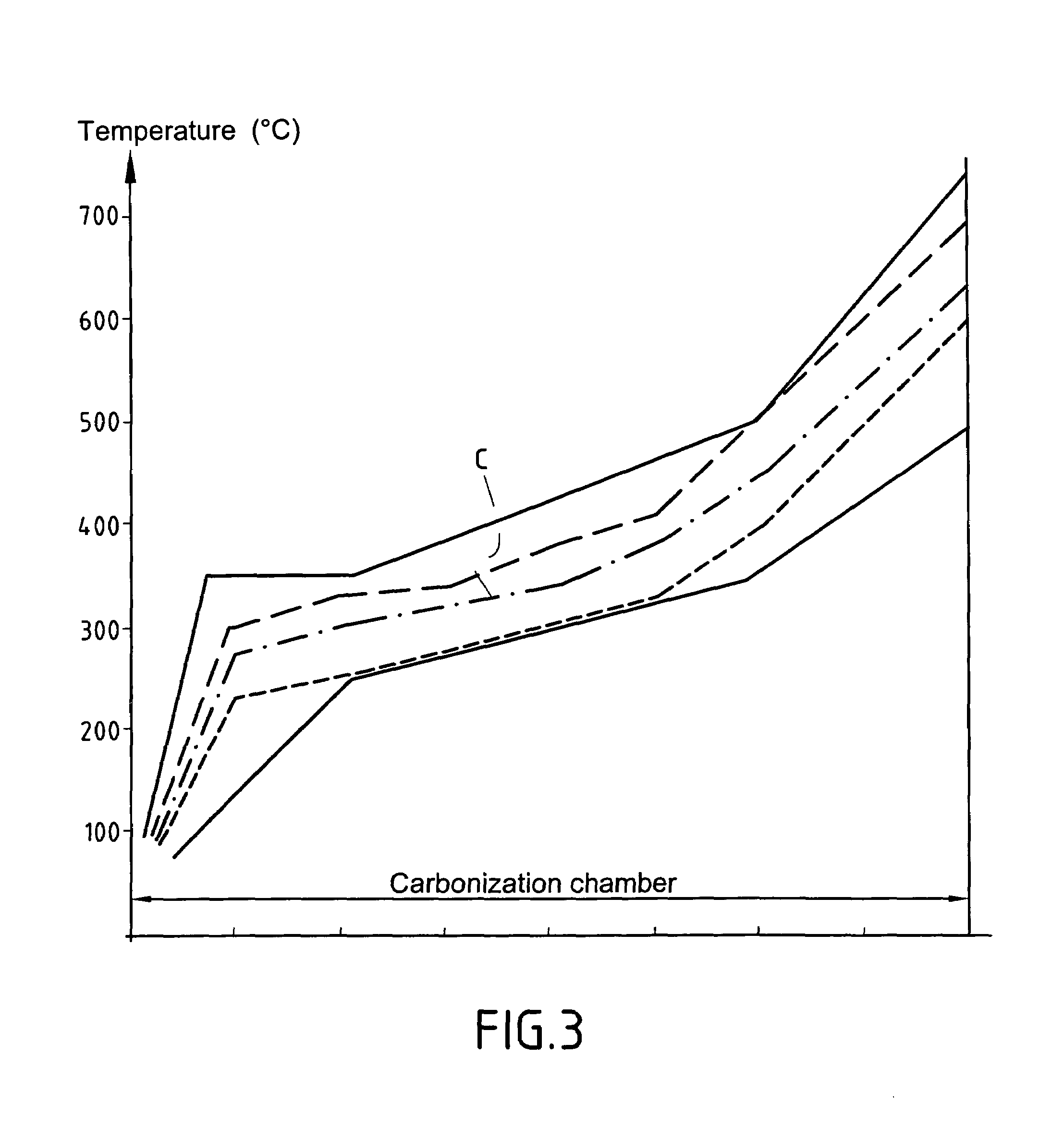Method of obtaining a carbon fiber fabric by continuously carbonizing a cellulose fiber fabric
a technology of cellulose fiber fabric and carbon fiber yarn, which is applied in the chemical characteristics of fibres, textiles and papermaking, weaving, etc., can solve the problem that cellulose fiber yarn is subject to significant shrinkag
- Summary
- Abstract
- Description
- Claims
- Application Information
AI Technical Summary
Benefits of technology
Problems solved by technology
Method used
Image
Examples
example 1
[0082]A carbonization installation was used having a chamber subdivided into eight zones 401 to 408 all of equal length.
[0083]Various strips of the same engineering rayon fabric made using 3600 dtex yarn with warp and weft counts of 11 strands per cm were carbonized in said installation after being subjected to impregnation by an organosilicon compound constituted by a polyhydromethyl-siloxane resin sold by the French company, Rhodia Silicones, under the reference RHODORSIL RTV 141 B, and drying and relaxation treatment at 170° C. for 90 min.
[0084]The various regulated temperatures in the zones of the oven and the various travel speeds were selected so that the temperatures and temperature rise speeds of the fabric in the various zones of the carbonization chamber 40 lay within the range given in the table below. The temperature limits are drawn as dashed-line curves in FIG. 3. The total times required for carbonization lay in the range 30 min to 70 min.
[0085]
Zone4014024034044054064...
PUM
 Login to View More
Login to View More Abstract
Description
Claims
Application Information
 Login to View More
Login to View More - R&D
- Intellectual Property
- Life Sciences
- Materials
- Tech Scout
- Unparalleled Data Quality
- Higher Quality Content
- 60% Fewer Hallucinations
Browse by: Latest US Patents, China's latest patents, Technical Efficacy Thesaurus, Application Domain, Technology Topic, Popular Technical Reports.
© 2025 PatSnap. All rights reserved.Legal|Privacy policy|Modern Slavery Act Transparency Statement|Sitemap|About US| Contact US: help@patsnap.com



